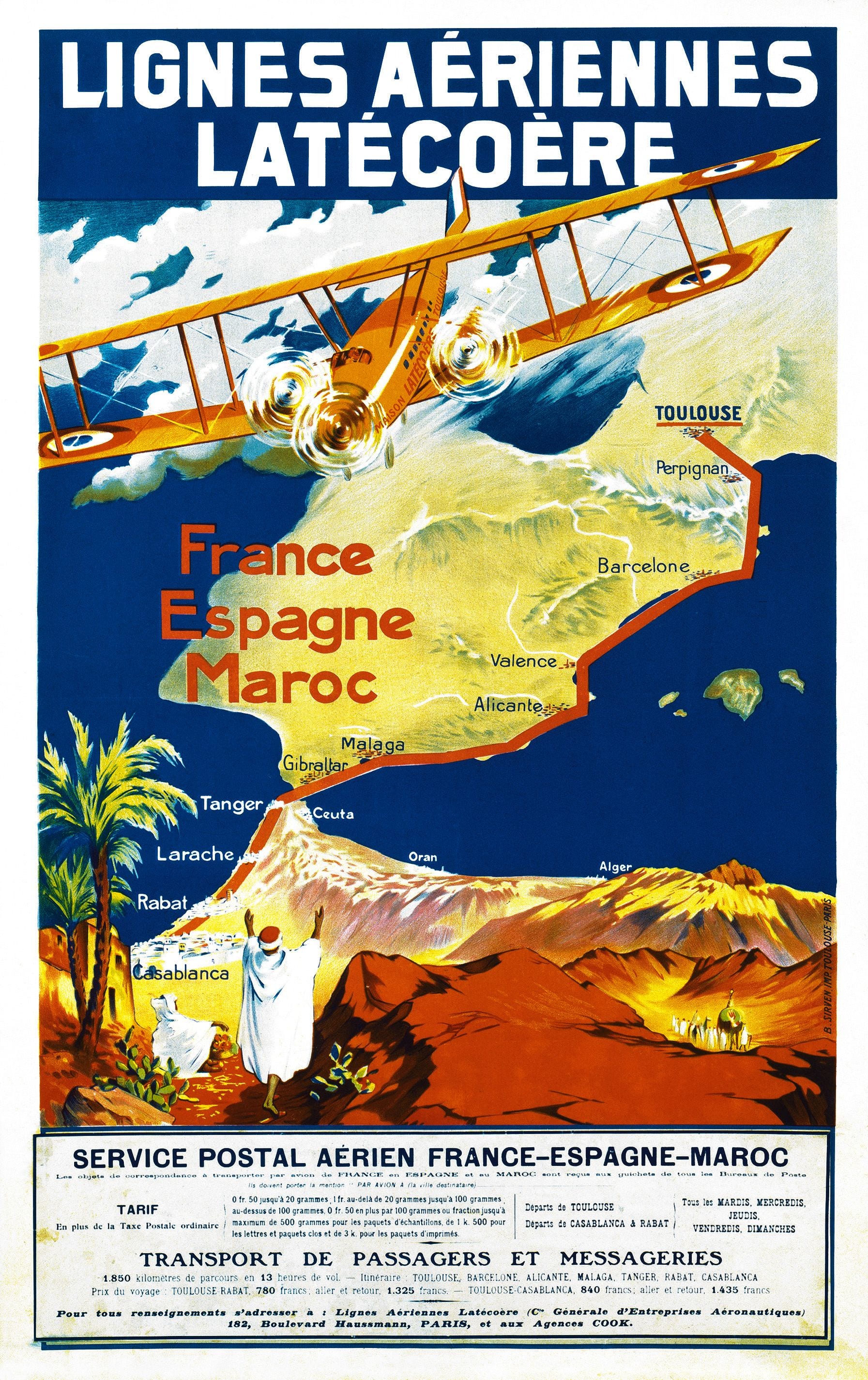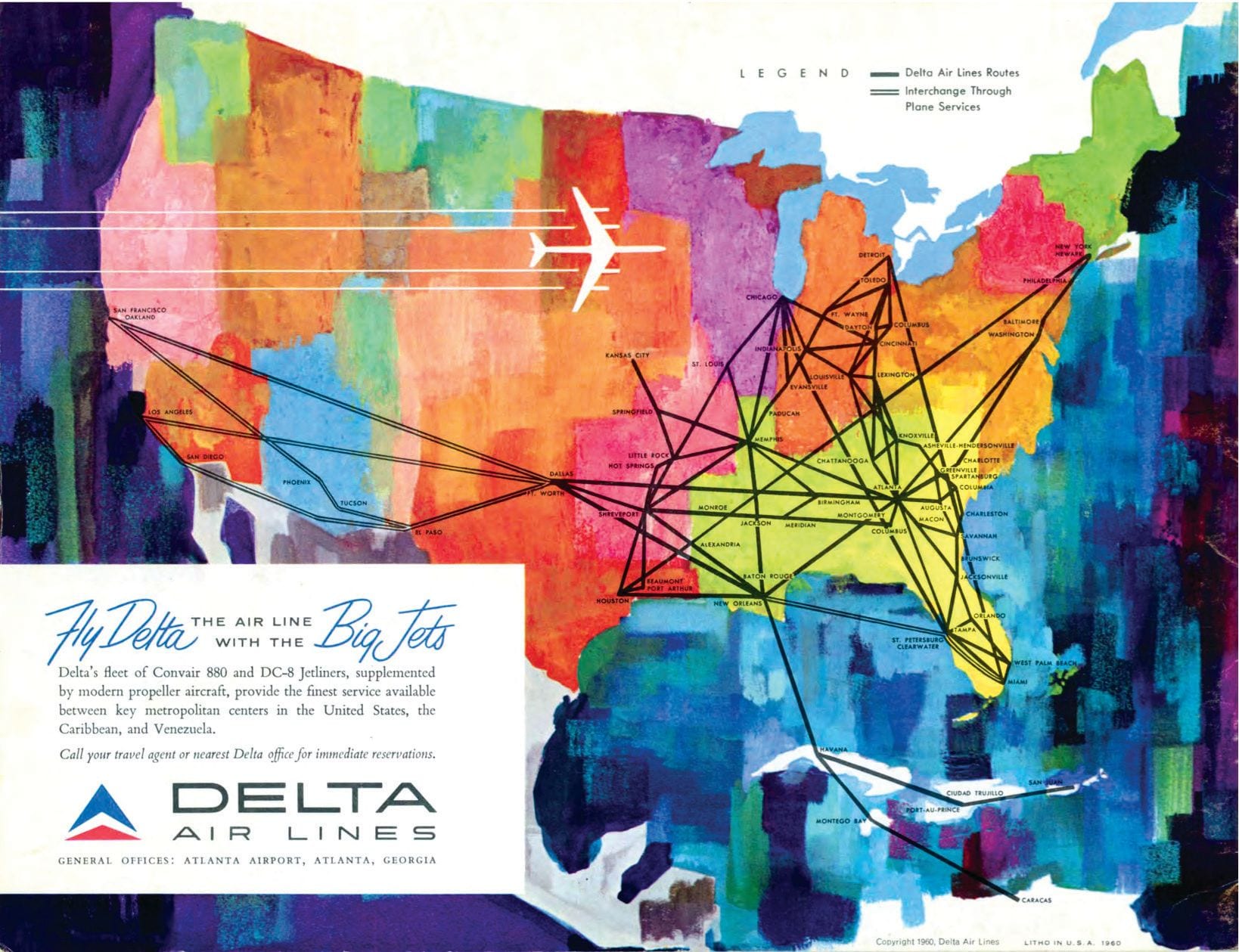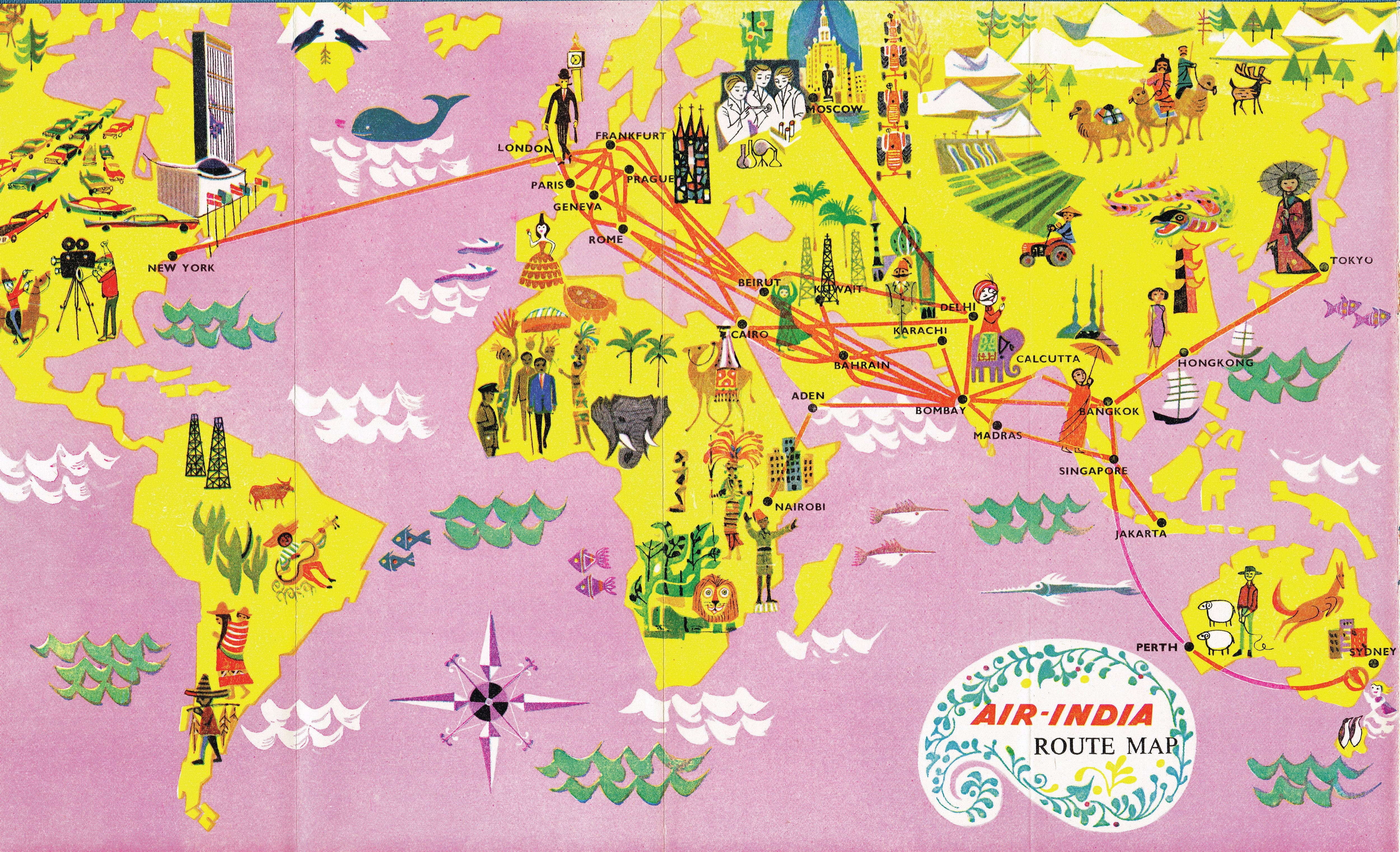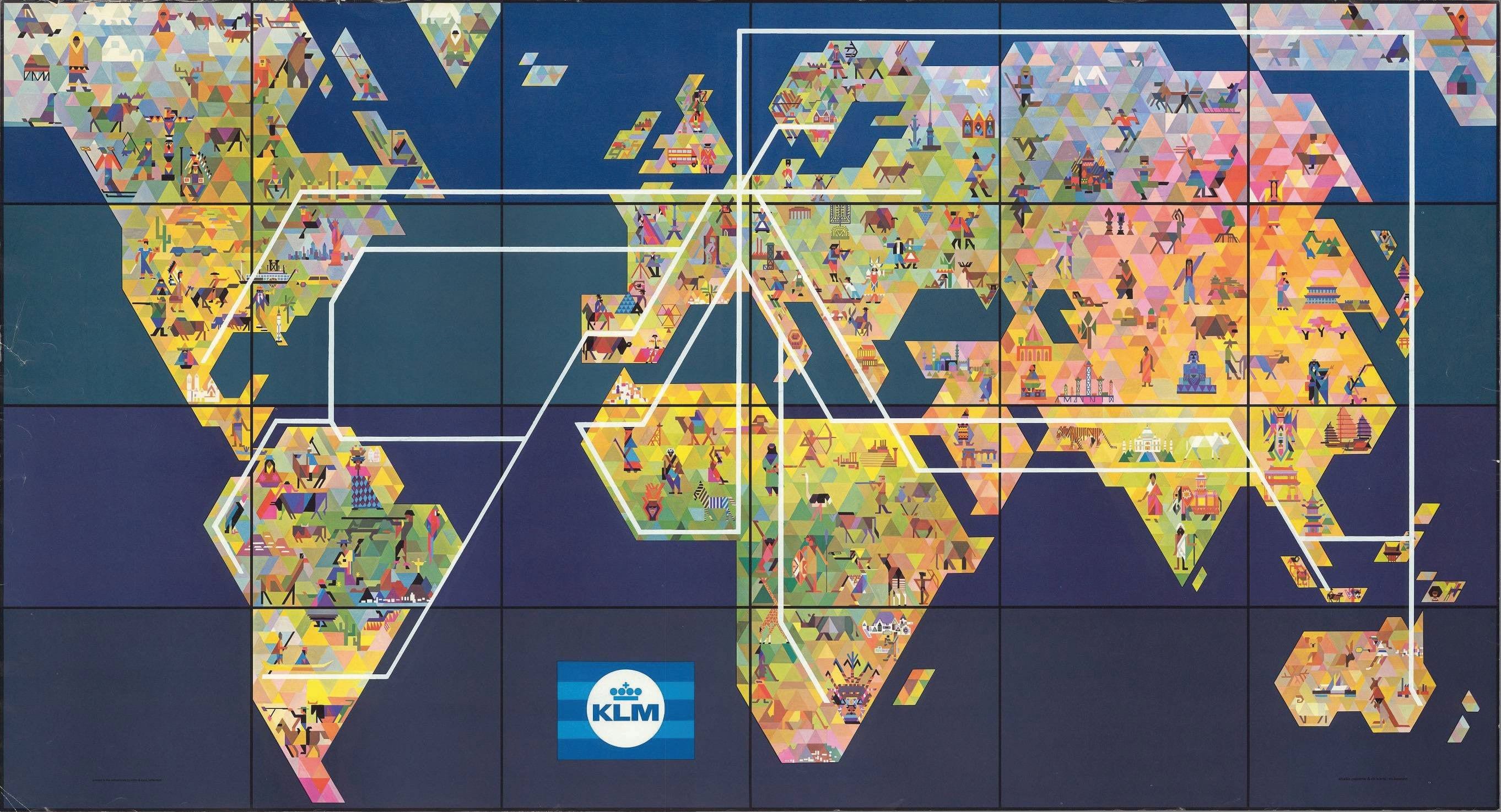
A New Branch of Cartography
Mark Ovenden
Author, broadcaster, consultant, lecturer
A new branch of cartography took off with the dawn of civil aviation a century ago. Airline maps were completely different from what came before, such as navigational maps used by pilots or even railroad route maps for train riders. Airline passengers did not need to know many specific details about their journey. All they were involved with were the airlines’ departure and arrival cities. To those with a fear of flying, perhaps the lack of detail was a clever psychological trick to entice them onto the fastest-moving machine ever invented.
Such a laissez-faire attitude to geographical accuracy gave rise to great experimentation, as the pages in this book testify. The very concept of whizzing rapidly from one side of the world to the other provided artists and marketers with inspiration. During the infancy of aviation, service maps were able to display in an instant both the proximity of the “colonies” and the viability of the new-fangled airlines over any surface-based transportation (especially the great oceangoing liners). Maps played a part in glamorizing flight and making it feel practical, and as networks matured, they were a valuable weapon in beating the competition.
Yet airlines did provide window-seat travelers with aids to assess what they were passing over, as shown in the image to the left, and in the twenty-first century the live map on a seat-back screen or even on a handheld device, shown below, is evolving rapidly. So much so that, in recent years, the tendency of airline websites has been to offer a “point-to-point” drop-down menu with the route laid over something like Google Earth, depriving users of the ability to browse the airlines’ wider offering of destinations on a well-designed map. Luckily for the collectors and students of modern industrial design, corporate identity, and cartography, printed paper maps live on. Keep hold of the next one: it could be collectible.
Why Airline Maps Are Special
Maxwell J. Roberts
Lecturer; owner of tubemapcentral.com
When we were planning this book, we knew that there would be no shortage of material to include. Our research included surveys of museums, archives, collectors fairs, and enthusiast websites. The more we searched, the more we unearthed. We were astonished by the sheer quantity of airline service maps created worldwide, for publicity posters, in-flight magazines, timetables, and newspaper/ magazine advertisements.
Are there more designs of airline maps than railway maps? It is hard to know for sure. Every London Underground station has a network map on every platform, consulted daily by bemused travelers, and millions of copies are printed annually to be taken away and studied at leisure. How many people have ever used an airline map to plan a journey? So much cartography going to waste, so why do airlines bother with maps at all?
Because maps don’t just show people the way. In the early days of flight, they showed that the impossible was now achievable, and that trips across the world that previously took weeks could now be covered in days. As technology became more reliable, and airline empires expanded, so the maps staked claims on territory, promising regular flights to all manner of exotic destinations. Fly with us—we’re bigger, faster (and safer?) than anyone else; travel on a business trip to save time and money, or take a vacation somewhere you never imagined possible. With these messages to convey, it is not surprising that maps became associated with exciting imagery, and as technology, business fortunes, design techniques, and fashions changed, so did the appearance of airline maps. This book tells, in its own way, the story of twentieth-century graphic design.
Airline maps are also special because the cartographer, free of the practical constraints of roads and rails, really does have a blank slate. Only the destinations and intermediate calling points matter, not the actual routes. Although flights are restricted to air corridors and airways, no passenger is going to quibble with the trajectories shown on a map. These can be as short and direct as the designer desires, any shape at all, but with one challenge: distances are often so great that the curvature of the Earth matters, and conveying speed and directness sometimes requires clever distortion of space or choice of projection.
The focus of this book is the airline service maps that publicize operators’ empires. Airline route maps, showing flight paths drawn over intricately detailed terrain, play a different role and are less stylistically diverse. They are also under threat from digital cartography; why print a map when a screen can show real-time location? But airline service maps are safe for now. Like all other forms of passenger transport, airlines can only survive if they can persuade the public to travel, and the creativity of designers of airline maps and publicity, in rising to this challenge, flies off every page of this book.

1919. Allen Airways Flying Museum (page 7) (via Penguin Books)

1929. Courtesy of KLM (page 14) (via Penguin Books)

1960. Courtesy of Delta Flight Museum, Atlanta (page 96) (via Penguin Books)

1962. Courtesy of Air India (page 85) (via Penguin Books)

1985. Courtesy of KLM (page 131) (via Penguin Books)
Excerpted from Airline Maps: A Century of Art and Design, by Mark Ovenden and Maxwell J. Roberts. Copyright © 2019 Penguin Books. Excerpted by permission of Penguin Books. All rights reserved. No part of this excerpt may be reproduced or reprinted without permission in writing from the publisher.
- Airline Maps: A Century of Art and Design: Amazon.co.uk: Mark ...
- Airline Maps
- Airline Maps by Mark Ovenden, Maxwell Roberts: 9780143134077 ...
- Airline Maps: A Century of Art and Design: Mark Ovenden, Maxwell ...
- Maxwell J. Roberts - dblp
- Profile for Maxwell Roberts at the University of Essex
- Tube Map Central Home Page
- Mark Ovenden (@markovenden) | Twitter
- Mark Ovenden | Penguin Random House
- Mark Ovenden

